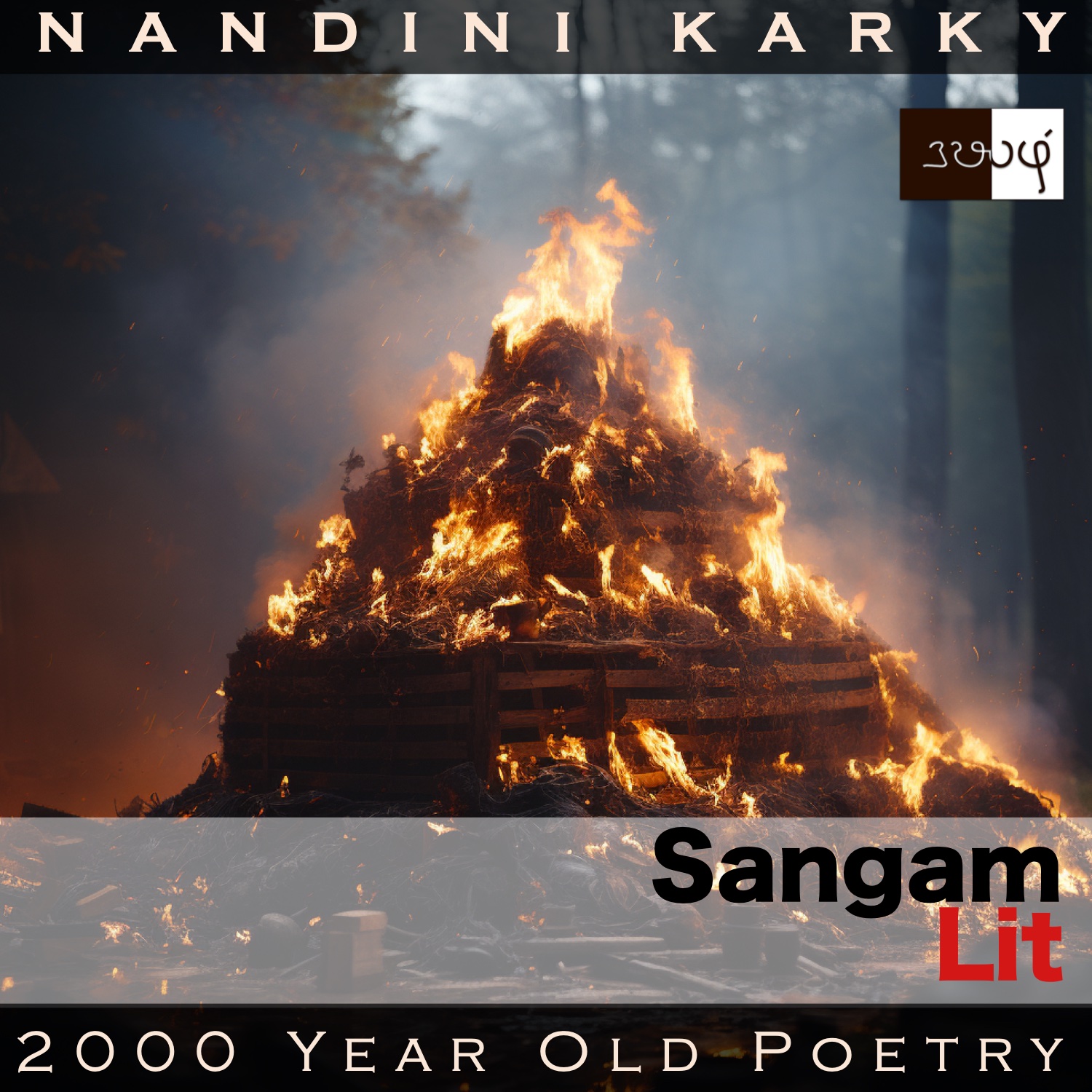Podcast: Play in new window | Download
Subscribe: Apple Podcasts | Spotify | Amazon Music | Android | iHeartRadio | Email | TuneIn | RSS | More
In this episode, we perceive the pride in a poet about her patron’s fame, as portrayed in Sangam Literary work, Puranaanooru 231, penned about the Velir King Athiyamaan Nedumaan Anji by the poet Avvaiyaar. Set in the category of ‘Pothuviyal Thinai’ or ‘Common Themes’, the verse informs us about a funeral custom.

எறி புனக் குறவன் குறையல் அன்ன
கரி புற விறகின் ஈம ஒள் அழல்,
குறுகினும் குறுகுக; குறுகாது சென்று,
விசும்புற நீளினும் நீள்க பசுங் கதிர்த்
திங்கள் அன்ன வெண்குடை
ஒண் ஞாயிறு அன்னோன் புகழ் மாயலவே.
In the previous verse, we heard this king’s death being mourned by another poet Arisil Kizhaar. Given the situation, can Avvaiyaar, a close friend of this king and associate for many years, remain without rendering her thoughts on that shattering moment? The poet’s words can be translated as follows:
“Akin to the blackened branches and twigs that a mountain farmer chops in his burnt-and-slashed field, appears this charcoal-coated wood amidst the radiant flames of the funeral pyre. If it diminishes, let it diminish. Without diminishing, if it soars to the skies, let it soar. However that may be, the fame of the one, who ruled with a white umbrella, akin to the cool rays of the moon; the one like the sun, shall never fade.”
Time to explore the nuances. The poet brings to fore a simile involving mountain farmers, who burn trees in a forest to clear the same for agriculture. At the end of this burning, the trees will be blackened and reduced in size and those farmers would chop the remaining stumps and branches and throw them in a pile. Comparing these blackened twigs to the charcoal-coated wood on the funeral pyre, the poet talks about two cases: One, where the flames die out, and the other, where the flames soar to the skies. Whatever scenario may occur, it does not matter, she says. Because the king, who lies on that pyre, is renowned for his just rule, signified by the moon-like white umbrella, and he is like the sun himself, and while his body may perish, his fame shall never end, the poet concludes.
Indeed, the poem is an instance of the devotion and respect in poet Avvaiyaar towards her friend and patron, King Athiyamaan. However, what struck me as novel in this verse is the mention of a funeral pyre. While many in contemporary Tamilnadu, who follow the Hindu religion, burn their dead and have the custom of dispersing the ashes in a river or ocean, this is not a usual occurrence in Sangam times. We see many mentions of burial urns and this tells us that burying the dead was the more predominant custom. This is also corroborated by the discovery of burial sites in many excavations from this period. Still, this song talks about burning of the dead, which tells us that this custom was practised too, and somehow over the years, this became the dominant custom of the Tamils. Considering that dealing with the dead is a unique marker of a culture, wonder how the transition from a burial tradition to a burning tradition occurred, and what that signified about the religious and spiritual beliefs of the people then!




Share your thoughts...